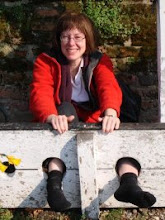Exhibition Title: ‘Quilts: Textile Treasures from Wales’
Dates running: 5th June – 25th August 2013
Venue: Abbot’s Hall, Museum of East Anglian Life, Stowmarket, Suffolk
Textile enthusiasts are in for a big treat this summer as the Museum of East Anglian Life presents a unique selection of Welsh quilts from the Ceredigion Museum in Aberystwyth - home to over a hundred quilts and bed covers.
Recognising the harsh existence for farmers, miners and seafarers in mid Wales during the 19th and early 20th centuries, handmade quilts provided comfort and warmth amidst sparsely furnished dwellings.
Curator, Carrie Canham, points out some of the extremes of the exhibition, ‘Some of the quilts were made from scraps of material but others are whole cloth. Even though we are showing some of the most beautiful quilts we also want to show the most interesting quilts. Some are made from the poorest of materials, cloth cut up from old clothes and stuffed with wool from the hedges.’
The exhibition follows the winding path of economics through the use of scraps of old cloth, tailors samples and much repaired or patched quilts, compared to specially purchased colourful satins and silks. Each of these fabrics being used to produce visually stunning patchwork covers.
The exhibition also investigates the use of colour and texture as well as design, touching on the traditions of the process and looking at the development of the nature of quilting as an art in itself.
Most of the quilts have personal stories attached to their making. Not only are they technically interesting but they are also historically fascinating. Quilt making is usually a social activity bringing people together and giving the makers a chance to share time together.
There will be a selection of quilts on show together with items associated with the making process.
For details of workshops and events taking place to accompany the exhibition, please see our website: www.eastanglianlife.org.uk
Notes to Editors:
1 The Museum of East Anglian Life is situated in Stowmarket, Suffolk. It is an open air museum set in 80 acres of countryside, with over 20 historic buildings and collections of over 45,000 objects exploring the rural and social history of East Anglia.
2 Admission to Abbot’s Hall is free, opening times are Mon-Sat 10-5pm, Sun 11-5pm. Refreshments are available on site in the Museum Cafe daily until 4pm.
3 Image details:
Flannel Star Patchwork Quilt - Copyright Ceredigion Museum
4 For more details:
Tel: 01449 612229
Website: www.eastanglianlife.org.uk
Email: enquiries@eastanglianlife.org.uk






